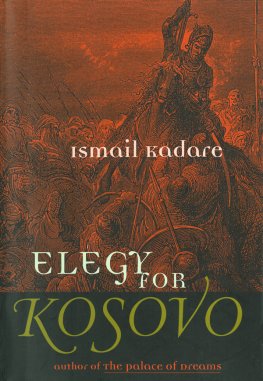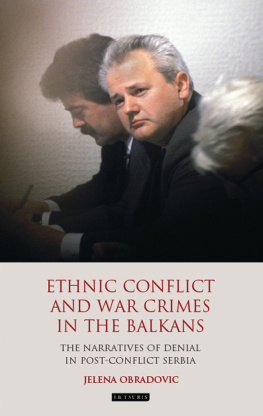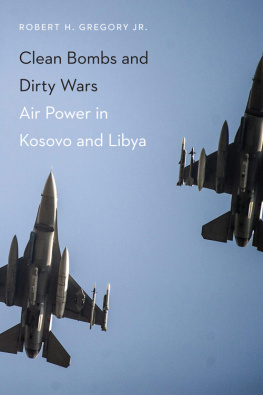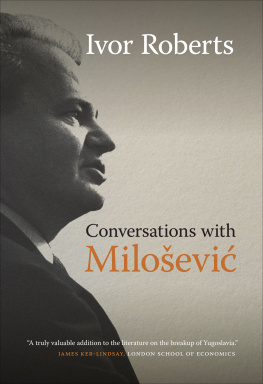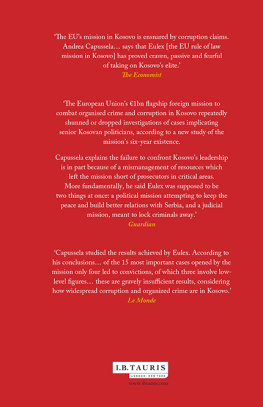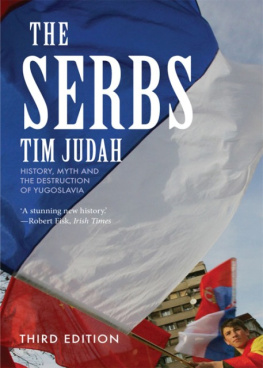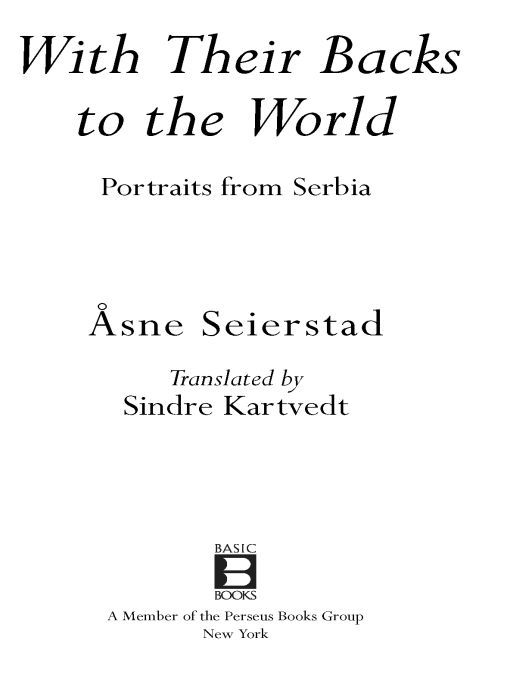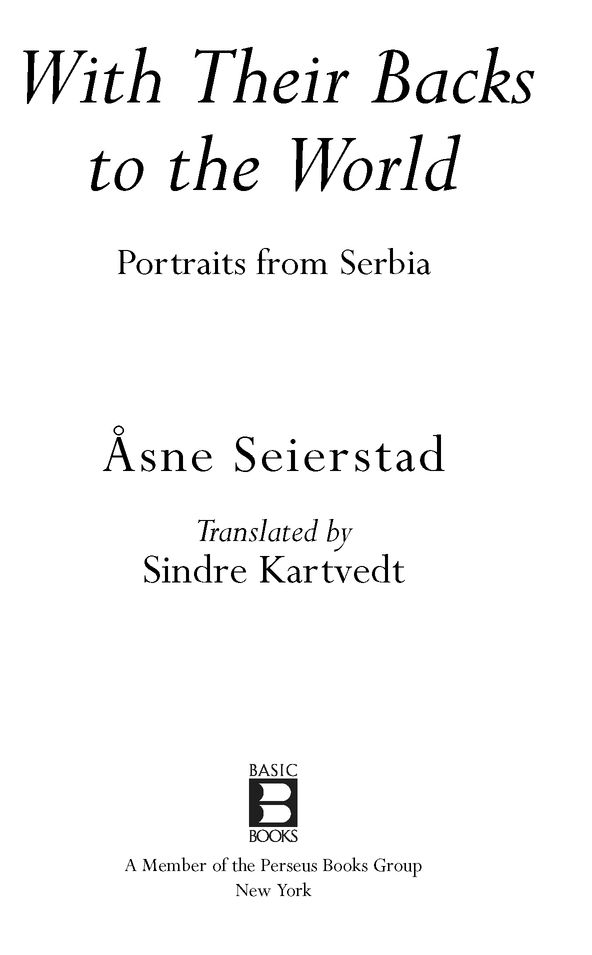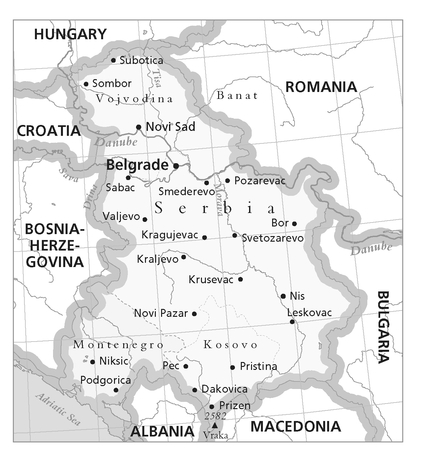Table of Contents
sne Seierstad was born in 1970 and studied Russian, Spanish and the History of Philosophy at Oslo University. She worked as a correspondent in Russia between 1993 and 1996, and in China in 1997. In 1999 she reported on the war in Kosovo for Norwegian television. She spent a year in Afghanistan from the autumn of 2001, reporting for a number of major Scandinavian newspapers. In spring 2003 she reported on the war in Iraq from Baghdad, and in 2004 published A Hundred and One Days, her compelling journal of the war and its after-effects.
sne Seierstad has received numerous awards for her journalism. The Bookseller of Kabul, published in 2003, is one of the bestselling Norwegian books of all time and has been translated into thirty-seven languages.
For Frydis and Dag
Foreword
I had come to Yugoslavia to see what history meant in flesh and blood.
Rebecca West, Black Lamb and Grey Falcon, 1941
This book grew out of three visits I made to Serbia between 1999 and 2004. When I decided to write it, the Serbs had just lost their fourth war in eight years. The war in Kosovo seemed to be over, and with it the apparently never-ending sequence of skirmishes, battles, massacres, torture, plunder and killings that made up the nightmarish wars of the Balkans during the 1990s. An ongoing inferno that left around two hundred thousand dead, millions of refugees, and tore societies to pieces.
But now these wars were over, they said. Were they really? Is it ever that simple?
In March 1999 Kosovo Albanians flooded across the borders of Macedonia, Montenegro and Albania, in order to escape the Serbian soldiers or their Serbian neighbours - following NATOs bombing raids. I was covering the conflict for the Norwegian Broadcasting Corporation, NRK. The refugees told of Serbian atrocities, burned villages and murdered relatives. Of being hunted by their neighbours like wild game.
Seventy-eight days later it was the Serbs who fled - in the thousands. The Albanians took their turn at the wheel of the Balkan cycle of bloody violence. Now it was their chance to slaughter, burn and pillage, and their vengeance was commensurate with the cruelty they had been subjected to. Soon Serbs told the same stories that the Albanians had recounted only weeks earlier - of being hunted by their neighbours.
I couldnt stop wondering about the Serbs, these outcasts of Europe. This people that started one war after the other, and lost them all.
I read everything I could get my hands on about Slobodan Milosevics power strategies and war machine, about the fractured opposition, about the oppression. But I found little that really told me who they were, these people who - virtually overnight - found themselves cast as warmongers and butchers. I wanted to know how they lived, what they talked about, what they cared about.
You only want to have your prejudices confirmed, people said when I asked them to tell me who they were.
How can you understand whats going on when we cant even understand it ourselves? asked one.
How can you expect us to answer questions when we are all walking around in a coma? was the reaction from a young art student.
While I went looking for answers, Milosevic tightened his grip. The regime wont leave without a bloodbath, suspected Zarko Korac, from the political opposition, in a restaurant in Belgrade one spring evening. Blood will flow, he assured me when I suggested that people seemed apathetic and not at all that ready to fight. He pointed to the beer-drinking crowd around us: This is what Sarajevo looked like the night before the war broke out.
Eventually I found thirteen individuals and one family, and followed them during the winter and spring of 2000. These people together made up a picture, a mosaic of sorts. Or rather, as my neighbour Peca suggested, a muckalica : a classic Serbian dish that consists of meats and vegetables, chopped into spices and oil and left to simmer for hours.
In my muckalica their names are Grandpa Bora, Mira, Rambo and Branko. They might be Titoists or nationalists, Yugonostalgic or anti-nationalists. They are students, rock stars, refugees and poets.
One scorching-hot summer day in 2000 I left Belgrade. By the end of September the book was published. The story was over. Or so I thought.
Two weeks after publication I returned to Serbia, carrying fourteen copies for the people who had shared their lives and thoughts with me for half a year. Elections had just been held and I barely made it through customs - journalists were no longer allowed entry. I convinced the guards that I was only there to visit friends.
The next day all hell broke loose. Not the bloodbath that Korac had predicted, but a minor October revolution nonetheless. Half a million people gathered in front of the parliament on the morning of 5 October, to protest at Milosevics refusal to recognise the oppositions candidate, Vojislav Kostunica, as the rightful winner of the election. They came from all over the country, on tractors, bulldozers, mopeds and buses. I managed to get a seat on top of a forklift from Cukarica. Im not leaving my spot until Milosevic is gone, said the burly farmer next to me. And together we watched this mass of humanity storm the parliament. The last gasps of Milosevics regime consisted of a cloud of tear gas and a few rounds of gunfire.
Hundreds of thousands of people were committed to staying in Belgrade until the President was overthrown. If they werent in Belgrade, they watched it unfold on TV. That morning Radio-televizija Srbije spewed its usual propaganda. Around noon the screens went black - the building that housed the broadcast was on fire after being stormed by demonstrators. The bosses escaped through the back doors and the journalists took over. That evening Vojislav Kostunica made his first appearance on the governments channel. Under his name it read: President of Yugoslavia.
Many of my friends were not yet convinced. Its too easy. Serbia cant turn around in a few hours.
I realised that the book wasnt finished. I had to write more: about the winners who had lost and the losers who had won. Again I visited all those who made up the pieces of my mosaic. What were they thinking now?
The second edition of the book followed the events up to the final night of the Milosevic era - to his arrest on 1 April 2001, when Serbia changed face.
He built a web of wickedness. He manipulated us for thirteen years. He starved the whole country with his madness for war, and turned the rest of the world against us, Prime Minister Zoran Djindjic told me that sunny spring day. We sat in the back of his black limousine, just hours after Milosevic had been arrested.
Under a bad leadership Serbs are capable of committing the most terrible atrocities; under good leaders we can do great deeds. Its like a field - if its not cared for, the weeds will take over. But if you tend it, water and feed the seeds, you will reap a bountiful harvest, he continued. Serbs are lazy, we lack discipline and have no capacity for self-criticism. Our primary flaw is that we believe we are stronger and better than anyone else.



